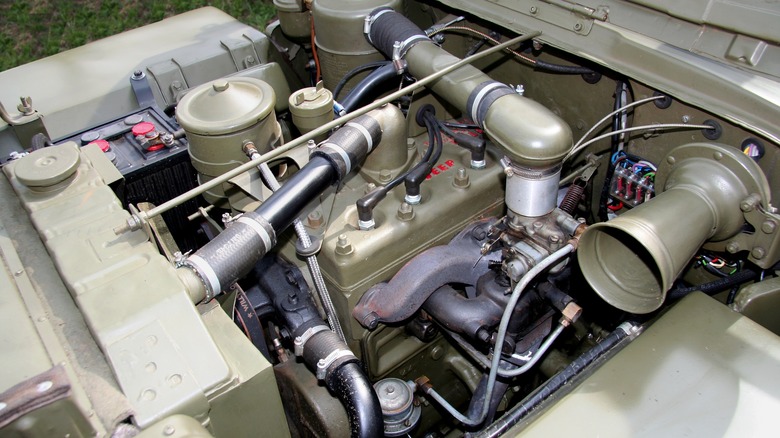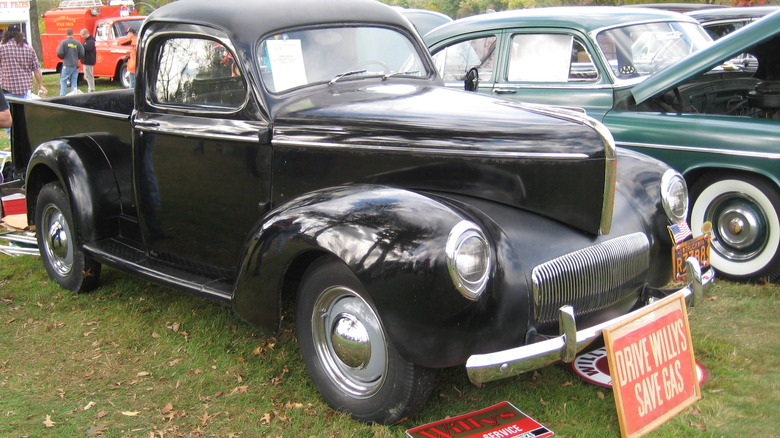All About The 'Willys Go-Devil' Engine
The Jeep brand has changed hands many times and is now the property of Chrysler's parent company Stellantis, but the brand was created by WIllys Overland immediately after World War II for the CJ-2A, the company's first civilian model. Before its civilian CJ line, Willys held the Army contract for the original WWII-vintage Jeep, due in large part to the strong, reliable engine under its hood. That engine, the four-cylinder, 134 cubic inch "Go-Devil", was the brainchild of Willys chief engineer Delmar "Barney" Roos, who joined the company in 1938 after spending time at Pierce Arrow, Studebaker, and Rootes in his homeland of England.
The notoriously stubborn Roos was tasked with boosting the power and endurance capability of WIllys' existing four-cylinder engine, which had first appeared in the 1926 Whippet. At the time, the engine produced between 30 and 48 horsepower and lasted only 22 hours at 3,400 rpm. Roos and his cohort updated the engine with new bearings, a pressurized oil delivery system, aluminum pistons, a counterbalanced crankshaft, and a redesigned valve system. Roos also replaced the 57-pound flywheel with a 31-pound version. The redesigned motor could run for more than 100 hours at 4,400 rpm and put out 60 horsepower.
The Go-Devil stayed in use until the mid-50s
Those numbers seem modest by current standards, now that supercars like the Mercedes AMG Project One boast engines capable of 1,000 horsepower. At the time, however, Ford was getting the same 60 horsepower from the massive L-head V8 engine of the 1940 Ford Deluxe that Roos got from his little four-cylinder. The new Willys engine first appeared in some of the automaker's 1939 models and was carried over into its 1940 and 1941 sedans and pickup trucks. The Go-Devil was the obvious choice for the MB Quad that served as WIllys' entry into the Army's bidding competition in 1940.
Willys used the Go-Devil engine in military Jeeps from 1941 through 1952 and in its civilian CJ models from their introduction in 1945 until 1954. After the war, Willys gave its Go-Devil an improved cooling system and replaced the interlocking crankshaft and camshaft gear arrangement with a timing chain. The cylinder head was also redesigned, and these changes were folded into the design of the F-head Hurricane engine which replaced the Go-Devil in later 1950s CJ models.

